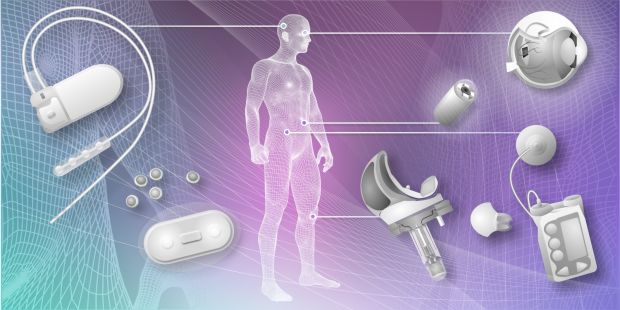Wireless Sensor for Medical Market size was valued at USD 70 Billion in 2023 and is expected to reach USD 140.5 Billion by the end of 2030 with a CAGR of 15% during the forecast period 2024-2030.
The Wireless Sensor for Medical Market focuses on the development and application of wireless sensor technologies used in medical devices and healthcare settings for monitoring patients, collecting health data, and improving clinical outcomes. These sensors, which are integrated into various wearable devices, implants, and medical systems, transmit real-time data to healthcare professionals for diagnostics, monitoring, and disease management without the need for physical connections or wires.
Key Drivers of the Wireless Sensor for Medical Market:
- Growing Demand for Remote Patient Monitoring:
- With the increasing prevalence of chronic diseases, aging populations, and the shift towards home healthcare, wireless medical sensors have become essential for continuous and real-time patient monitoring. These sensors help manage conditions such as diabetes, cardiovascular diseases, and respiratory issues, enabling timely intervention.
- Technological Advancements in Sensor Technology:
- Advances in microelectronics, wireless communication, and sensor miniaturization have enabled the development of highly sensitive and accurate wireless sensors. These sensors are capable of monitoring various physiological parameters such as heart rate, blood pressure, glucose levels, and oxygen saturation.
- Rising Adoption of Wearable Medical Devices:
- Wearable medical devices, such as smartwatches, fitness trackers, and continuous glucose monitors (CGMs), rely on wireless sensors to track health metrics. The widespread adoption of these devices is boosting the demand for wireless sensors in healthcare.
- Increasing Focus on Telemedicine and Digital Health:
- The COVID-19 pandemic accelerated the adoption of telemedicine and digital health platforms, where wireless sensors play a critical role in remote diagnostics and monitoring. These sensors enable healthcare providers to monitor patients’ conditions remotely and adjust treatments accordingly.
- Rising Healthcare Costs and Demand for Preventive Care:
- The growing need to reduce healthcare costs has spurred the demand for technologies that support preventive care and early diagnosis. Wireless sensors help detect early signs of health deterioration, allowing for timely interventions and reducing hospital admissions.
Market Trends:
- Integration of Artificial Intelligence (AI) and Machine Learning (ML):
- AI and ML are being integrated into wireless sensor systems to analyze large volumes of health data. These technologies enhance predictive analytics, enabling early detection of health issues and improving personalized treatment plans.
- Advances in Wearable Technologies:
- The demand for wearable devices with integrated wireless sensors continues to grow, driven by consumer interest in health tracking and fitness. Companies are developing increasingly sophisticated wearables that monitor a wider range of health metrics with improved accuracy.
- Increasing Adoption of Internet of Medical Things (IoMT):
- The IoMT refers to the network of connected medical devices, including wireless sensors, that communicate data in real-time. This connectivity enables healthcare professionals to monitor patients remotely, improving care coordination and outcomes.
- Miniaturization of Sensors:
- The trend toward miniaturization has led to the development of smaller, less invasive sensors that can be comfortably worn or implanted by patients. These smaller sensors are also more energy-efficient, improving battery life and extending the functionality of wearable and implantable devices.
- Rising Interest in Non-Invasive Sensors:
- Non-invasive wireless sensors, which do not require skin penetration or surgical procedures, are gaining popularity due to their ease of use and patient comfort. These sensors can track vital signs and other health metrics without causing discomfort to the patient.
Challenges:
- Data Privacy and Security Concerns:
- Wireless sensors transmit sensitive patient data, raising concerns about data privacy and cybersecurity. Ensuring secure communication and storage of health information is critical for the widespread adoption of these devices.
- High Cost of Advanced Sensor Technologies:
- Advanced wireless sensor technologies can be expensive, limiting access for certain patients and healthcare providers. Cost considerations, particularly in developing regions, may restrict market growth.
- Regulatory Challenges:
- Regulatory approvals for wireless medical devices can be complex and time-consuming. Manufacturers must comply with stringent regulations to ensure the safety and efficacy of their products, which can delay market entry.
- Limited Battery Life:
- Many wireless sensors rely on batteries, and limited battery life can hinder long-term continuous monitoring. Improvements in battery technology and energy-harvesting solutions are necessary to overcome this challenge.
Future Outlook:
The Wireless Sensor for Medical Market is expected to experience robust growth as healthcare shifts towards digital solutions, preventive care, and personalized medicine. The demand for wireless sensors will continue to rise, driven by advancements in wearable devices, telemedicine, and remote monitoring technologies.
As AI and IoT integration in healthcare expand, the capabilities of wireless sensors will improve, providing more accurate and comprehensive health data. Moreover, ongoing technological advancements, such as energy-efficient sensors, non-invasive monitoring solutions, and miniaturized devices, will contribute to further market expansion.
However, addressing challenges related to data security, regulatory approvals, and cost will be crucial for sustained growth. The global adoption of wireless sensors in healthcare, especially in emerging markets, will continue to accelerate as awareness and accessibility improve.
In conclusion, the Wireless Sensor for Medical Market holds significant promise for revolutionizing patient care by enabling real-time, continuous, and remote health monitoring, ultimately improving clinical outcomes and reducing healthcare costs.
Click Here, To Get Free Sample Report https://stringentdatalytics.com/sample-request/wireless-sensor-for-medical-market/18806/
Market Segmentations:
Global Wireless Sensor for Medical Market: By Company
Medtronic
Measurement Specialties
NXP Semiconductors
Novosense AB
STMicroelectronics
Honeywell
Smiths Medical
First Sensor
Shimmer
TE Connectivity
Sensirion AG
Global Wireless Sensor for Medical Market: By Type
Wearable
Implantable
Other
Global Wireless Sensor for Medical Market: By Applications
Diagnostics
Monitoring
Therapeutics
Imaging
Global Wireless Sensor for Medical Market: Regional Analysis
The regional analysis of the global Wireless Sensor for Medical market provides insights into the market’s performance across different regions of the world. The analysis is based on recent and future trends and includes market forecast for the prediction period. The countries covered in the regional analysis of the Wireless Sensor for Medical market report are as follows:
North America: The North America region includes the U.S., Canada, and Mexico. The U.S. is the largest market for Cold-chain Pharma in this region, followed by Canada and Mexico. The market growth in this region is primarily driven by the presence of key market players and the increasing demand for the product.
Europe: The Europe region includes Germany, France, U.K., Russia, Italy, Spain, Turkey, Netherlands, Switzerland, Belgium, and Rest of Europe. Germany is the largest market for Cold-chain Pharma in this region, followed by the U.K. and France. The market growth in this region is driven by the increasing demand for the product in the automotive and aerospace sectors.
Asia-Pacific: The Asia-Pacific region includes Singapore, Malaysia, Australia, Thailand, Indonesia, Philippines, China, Japan, India, South Korea, and Rest of Asia-Pacific. China is the largest market for Cold-chain Pharma in this region, followed by Japan and India. The market growth in this region is driven by the increasing adoption of the product in various end-use industries, such as automotive, aerospace, and construction.
Middle East and Africa: The Middle East and Africa region includes Saudi Arabia, U.A.E, South Africa, Egypt, Israel, and Rest of Middle East and Africa. The market growth in this region is driven by the increasing demand for the product in the aerospace and defense sectors.
South America: The South America region includes Argentina, Brazil, and Rest of South America. Brazil is the largest market for Cold-chain Pharma in this region, followed by Argentina. The market growth in this region is primarily driven by the increasing demand for the product in the automotive sector.
Click Here, To Buy Premium Report https://stringentdatalytics.com/purchase/wireless-sensor-for-medical-market/18806/?license=single
Key Points:
- Define, describe and forecast The Global Market by type, application, end user and region.
- Provide enterprise external environment analysis and PEST analysis.
- Provide strategies for company to deal with the impact of COVID-19.
- Provide market dynamic analysis, including market driving factors, market development constraints.
- Provide market entry strategy analysis for new players or players who are ready to enter the market, including market segment definition, client analysis, distribution model, product messaging and positioning, and price strategy analysis.
- Keep up with international market trends and provide analysis of the impact of the COVID-19 epidemic on major regions of the world.
- Analyze the market opportunities of stakeholders and provide market leaders with details of the competitive landscape.
About Stringent Datalytics
Stringent Datalytics offers both custom and syndicated market research reports. Custom market research reports are tailored to a specific client’s needs and requirements. These reports provide unique insights into a particular industry or market segment and can help businesses make informed decisions about their strategies and operations.
Syndicated market research reports, on the other hand, are pre-existing reports that are available for purchase by multiple clients. These reports are often produced on a regular basis, such as annually or quarterly, and cover a broad range of industries and market segments. Syndicated reports provide clients with insights into industry trends, market sizes, and competitive landscapes. By offering both custom and syndicated reports, Stringent Datalytics can provide clients with a range of market research solutions that can be customized to their specific needs.
Contact Us
Stringent Datalytics
Contact No- +1 346 666 6655
Email Id- sales@stringentdatalytics.com




Leave a Reply